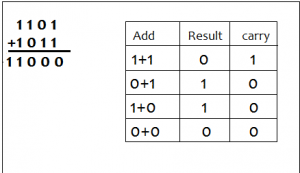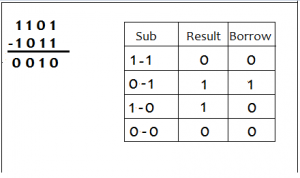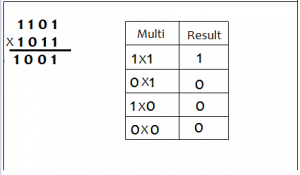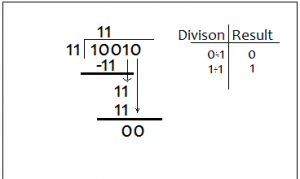
Binary Operation is described below with their examples:
Binary Operation:
A binary operation is simply a rule for combining two values to create new value is an important topic in the digital system. Binary operation includes the basic arithmetic operations of addition, subtraction, multiplication, and division. A binary operation is simply a rule for combining two values to create a new value The following sections present the rules that apply to these operations when they are performed on binary numbers.
Binary Addition
It is a key for binary subtraction, multiplication, division. Binary addition is performed in the same way as an addition in the decimal-system and is, in fact, much easier to master. There are four rules of binary addition.

In the fourth case, a binary addition is creating a sum of (1 + 1 = 10) i.e. 0 is written in the given column and a carry of 1 over to the next column.
Binary Subtraction
Subtraction and Borrow, these two words will be used very frequently for the binary subtraction. Binary subtraction is also similar to that of decimal subtraction with the difference that when 1 is subtracted from 0, it is necessary to borrow 1 from the next higher-order bit and that bit is reduced by 1 (or 1 is added to the next bit of subtrahend) and the remainder is 1. There are four rules of binary subtraction.

Binary Multiplication
Binary multiplication is similar to decimal multiplication. It is simpler than decimal multiplication because only 0s and 1s are involved. There are four rules of binary multiplication.

Binary Division
The Binary division is similar to decimal division. It is called as the long division procedure.

you may also like the binary codes, types of the binary number system

Leave a Reply